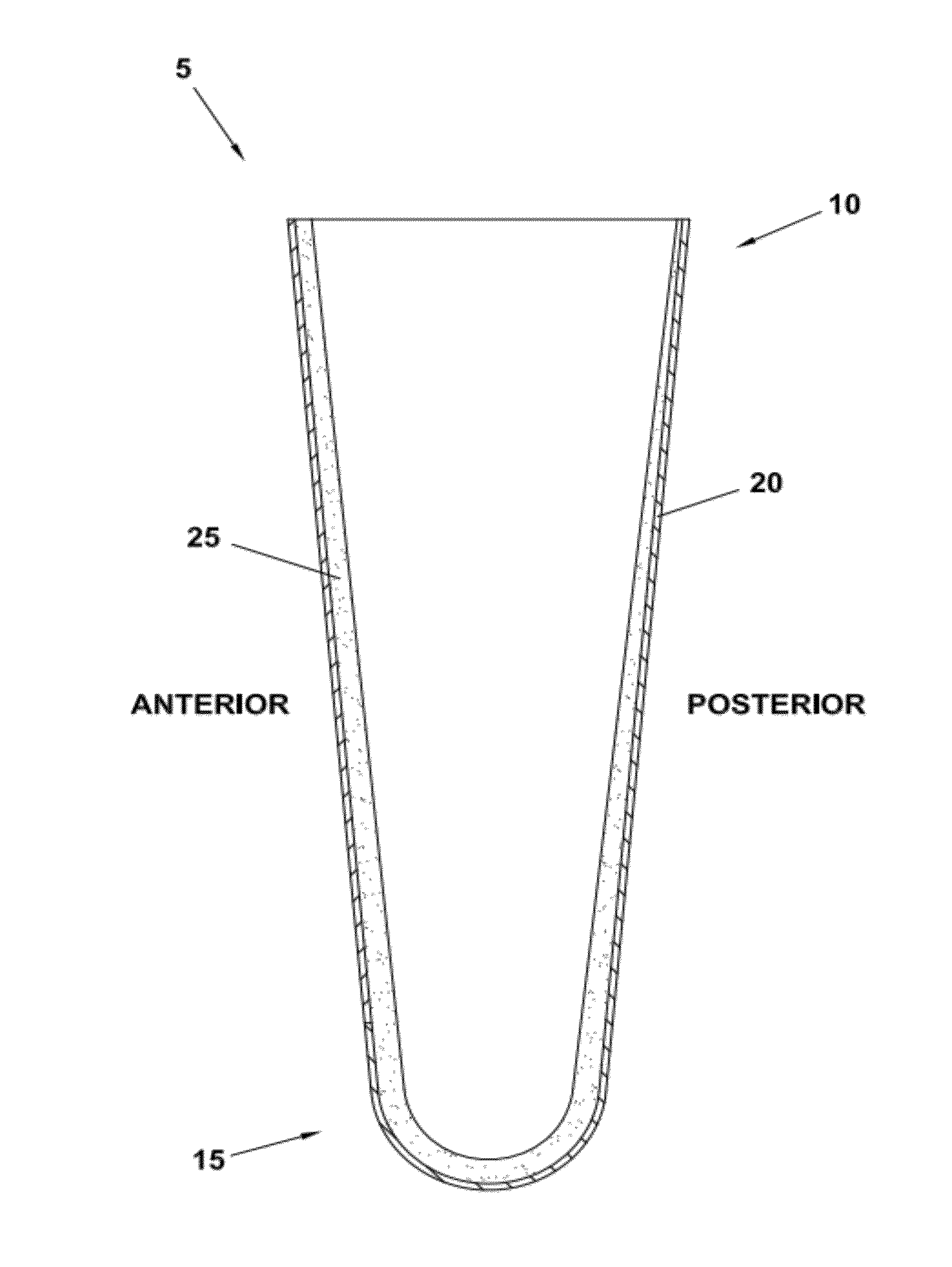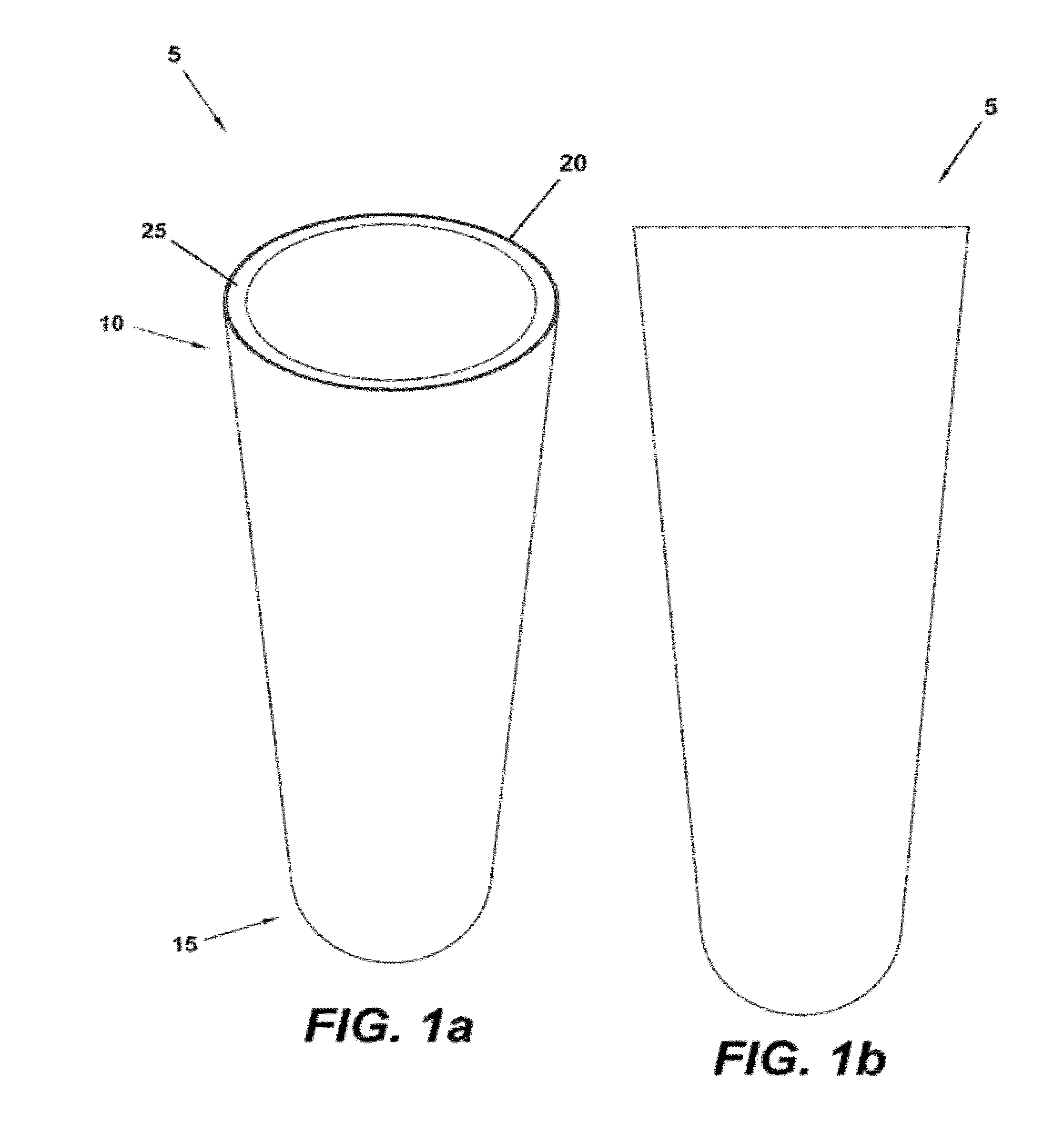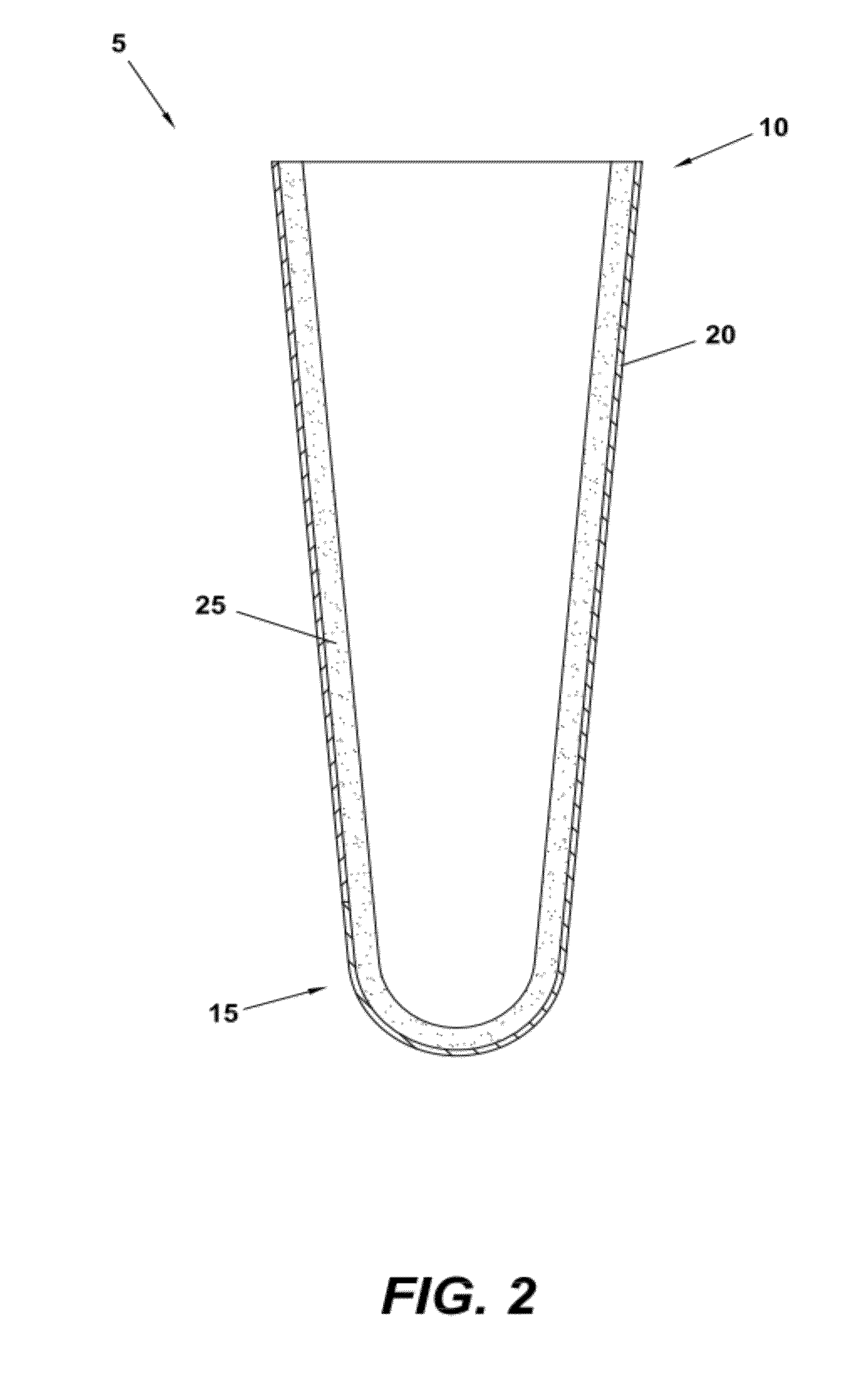Fabric-covered polymeric prosthetic liner
a polymer prosthetic and fabric-covered technology, applied in the field of fabric-covered polymeric prosthetic lines, can solve the problems of inconvenient connection, increased comfort, and increased wear of the stump, and achieve the effect of facilitating connection and increasing comfor
- Summary
- Abstract
- Description
- Claims
- Application Information
AI Technical Summary
Benefits of technology
Problems solved by technology
Method used
Image
Examples
Embodiment Construction
)
[0026]A first embodiment of a below knee (BK) prosthetic cushion liner 5 of the present invention is depicted in FIGS. 1A-1B and FIGS. 2-3. An exemplary embodiment of a cushion locking liner of the present invention is illustrated in FIGS. 4A-4B, which cushion locking liner may have the same or a similar fabric-gel construction as that shown in FIGS. 1A-1B and FIGS. 2-3. The cushion liner and cushion locking liner of the present invention may be hereinafter referred to simply as a “liner.” While the liner shown in the drawing figures is a BK liner, liners of the present invention may also be above knee (AK) liners for use by trans-femoral amputees.
[0027]As shown, the liner 5 includes an open end 10 for permitting insertion of a residual limb, and a closed end 15 opposite the open end. The interior of the liner 5 is comprised of a polymeric material 20 while the exterior of the liner is comprised of fabric 25. The polymeric material 20 of the liner interior will be in contact with t...
PUM
 Login to View More
Login to View More Abstract
Description
Claims
Application Information
 Login to View More
Login to View More - R&D
- Intellectual Property
- Life Sciences
- Materials
- Tech Scout
- Unparalleled Data Quality
- Higher Quality Content
- 60% Fewer Hallucinations
Browse by: Latest US Patents, China's latest patents, Technical Efficacy Thesaurus, Application Domain, Technology Topic, Popular Technical Reports.
© 2025 PatSnap. All rights reserved.Legal|Privacy policy|Modern Slavery Act Transparency Statement|Sitemap|About US| Contact US: help@patsnap.com



